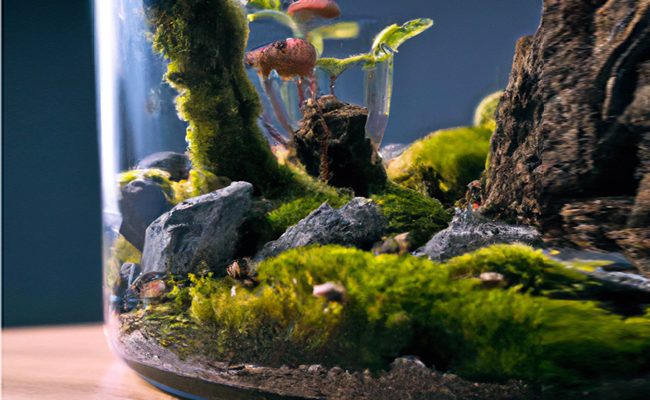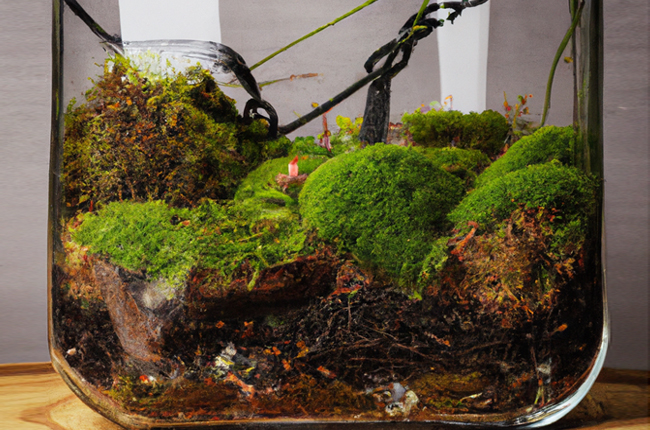
Have you ever felt the soft touch of moss on your skin? It’s like the feeling of a blanket against your skin, but it’s the touch of nature and life. Mosses are mysterious plants that we have yet to fully understand and appreciate. They can be found in almost every habitat on the planet, from deserts to oceans and forests, and they seem to do pretty much anything. They absorb carbon dioxide, purify air, and even serve as an air conditioner.
In this blog, we will cover everything you want to know about moss – how they grow, where they grow, what they do – and why they’re so fascinating. Let’s dive into moss world!
what is moss?
-Moss is a type of plant that makes its own food through photosynthesis.
– Mosses are nonvascular plants, which means they do not have the water and nutrient transportation tissues of other land plants. Instead, mosses absorb water and nutrients through their leaves.
– Mosses are generally green and bryophytes (nonvascular plants that evolved from liverworts), making them an important part of the ecosystem in some vegetation types. They can be found in forests, wetlands, and deserts.
– Mosses are easily recognized because of their distinctive appearance of pale green or brown leafy structures on the ground. They grow attached to rocks, trees, or other plants or get washed into the water by the wind or rain.
– Some species of mosses are known for their ability to carpet woodland and forest floors with their leaves and form moss balls. These species are also known for their role in the nutrient and water economy of some vegetation types.
Mosses are nonvascular plants that play an essential role in the ecosystem of some vegetation types. They’re easy to recognize due to their distinctive green appearance on the soil surface and provide vital habitats for small animals and plants, who use moss as a food source or shelter.
how moss grows?
Mosses are small non-vascular plants that grow in damp, shady areas. They do not have traditional roots, but instead have tiny root-like structures called rhizoids that are actually parts of the stem. In mosses, absorption of water and nutrients by the rhizoids is limited. These plants release nutrients for the use of more-complex plants that succeed them, and help in soil erosion control. Mosses have a complex life cycle that is broken up into two stages, the sporophyte stage and the gametophyte stage. The sporophyte stage is the spore-bearing part of the moss plant. These plants produce spore packets known as gametophytes. When these gametophytes are exposed to sunlight, they develop into gametes, which eventually develop into moss animals such as moss spores or moss flowers.
-The gametophyte stage of moss life cycle is short and easy compared to the sporophyte stage. Gametophytes can only survive for a few days under ideal conditions before they undergo meiosis to become spores.
During this process, gametophytes can quickly move from place to place to find optimal conditions for survival. This ability allows them to quickly adapt to changing conditions and climates
-Spore packets produced by mosses are known as gametophytes. These temporary plant forms undergo meiosis to become spore packets (gametes). The spore packets travel through the air until they land on suitable environmental conditions, where a bifurcate protoneme develops into an individual spore cell
-Mosses have a relatively simple life cycle compared to other plants
In terms of their lifecycle, moss
where moss grows?
– Mosses are an essential part of a healthy and balanced ecosystem. They are the vital link between the land, the water, and the air and play a vital role in absorbing carbon dioxide and water pollution.
– Mosses help to stabilize soil erosion by slowing down the rate of soil movement. In addition, mosses help to purify water by filtering out harmful pollutants.
– Mosses provide shelter for animals such as birds and small mammals, preventing them from exposure to the sun and wind. These plants also help to keep water warm during the winter months when it is not as much of a factor in regions with stable weather patterns.
– Mosses are able to survive under stressful environmental conditions due to their ability to photosynthesize and change their shapes, sizes, and positions in response to environmental cues. They can survive on very little sunlight or water, requiring only moderate levels of nutrients.
– In general, mosses require moisture and are not typically found in dry, arid climates.
There are many different types of moss depending on their location, climate, and species. But they all have one thing in common: they need moisture to survive.

Moss as an Air Conditioner and Fine Dust Extractor
Mosses are a type of plant that are known for their ability to absorb and hold water. Some mosses use ammonia from car exhaust as a nutrient, while others bind and metabolize heavy metals or fine dust. Evaporation of moss causes a considerable cooling of the air, making them an excellent air conditioner and fine dust extractor. They can also absorb and store a lot of moisture, making them an effective way to capture and store water during droughts. In addition to these features, mosses are beautiful plants with fascinating shapes and colors, making them an ideal addition to any habitat.
Mosses are capable of purifying the air by absorbing pollutants like nitrogen dioxide, carbon dioxide, and other gases. These plants are great environmental stewards, helping to clean the air by absorbing harmful gases and acting as a protective barrier against pollution. Additionally, mosses help control soil erosion by holding on to nutrients and water in the soil. The plants provide shelter for animals and serve as a food source for many species. Besides, mosses help regulate the climate through their ability to absorb solar radiation. Their diverse habitats and unique benefits make them worthy additions to any environment.
How Does Moss Do That?
Moss is the green, leaf-like plant of the division Bryophyta. It is one of the oldest groups of plants and can be found in almost any type of environment, from deserts to forests. Mosses are known for their ability to survive in harsh conditions, such as dry land or salty water. They also absorb and translocate water and nutrients from the air via osmosis.
Mosses have rhizoids, root-like structures that enable them to adhere to surfaces. These structures provide the moss with a source of nutrition and protection, allowing it to absorb all of its water and nutrients from the air. The moss is able to photosynthesize on all sides and reproduce with single-celled spores.
Mosses help increase soil stability by absorbing water and nutrients and spreading them evenly across the soil, making it more fertile. They also aid in the transportation of water, soil retention, and the spread of nutrients.
In conclusion, mosses are important plants for a variety of reasons, from supporting healthy ecosystems to beautifying our surroundings. They can be found nearly everywhere and play an integral role in our environment.
Conclusion
Mosses are some of the most ancient life on earth. They have adapted to thrive in just about every environment, from deserts to arctic tundra. We don’t know how they first evolved, but mosses have been able to survive for millions of years. These plants are simple, ancient organisms that deserve a place in the limelight!
Leave a Reply